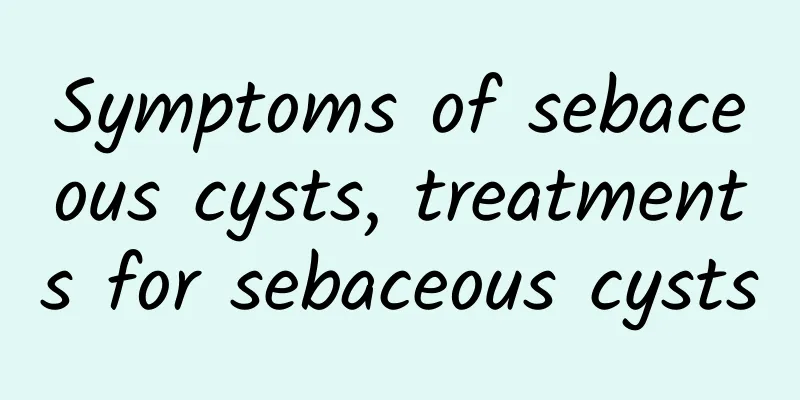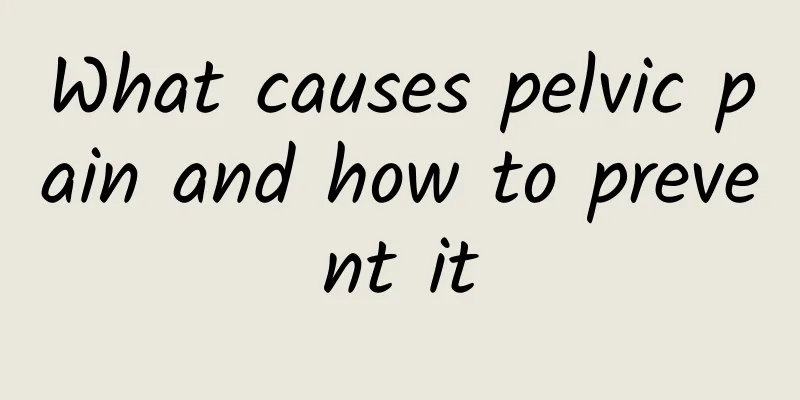Symptoms of sebaceous cysts, treatments for sebaceous cysts

|
Sebaceous cysts are very common in many people. Generally speaking, after suffering from sebaceous cysts, people will be very concerned about the symptoms of the disease. So, what are the symptoms of sebaceous cysts? Clinical manifestations of sebaceous cysts: Sebaceous cysts protrude from the surface of the skin and are prone to occur in areas rich in sebaceous glands, such as the scalp, face, chest and back, and most of them grow slowly. When there is no concurrent infection, patients generally have no symptoms. The tumors are spherical, single or multiple, and vary in size, ranging from a few millimeters to nearly 10 centimeters. It is of medium hardness and elasticity, protruding from the skin surface, adhered to the skin, not easy to push, with a smooth surface and no sense of fluctuation. There is a needle-head-sized umbilicus-like opening in the center, which is blue-black in color and shaped like a needle-head acne. Squeezing can produce tofu dregs or noodle mud-like contents, which are sebum and broken sebaceous gland cells, often with a rancid odor. It is extremely rare for sebaceous cysts to become cancerous, but they are prone to secondary infection. If infection occurs, inflammatory reactions such as redness, swelling, heat, and pain may occur. The cyst may rupture and temporarily disappear under external force, but it will form scars and is prone to recurrence. Treatment of sebaceous cysts: The most commonly used radical cure is surgical resection under local anesthesia. Sebaceous cysts are small tumors on the body surface. The surgery is simple and can be performed in an outpatient clinic. The cyst should be removed as completely as possible without leaving any cyst wall, otherwise it is prone to recurrence. Since sebaceous cysts mostly occur on the face, the cosmetic effect should be considered during surgical excision. A small incision can be used to remove the sebaceous cyst on the face and neck, and the skin can be sutured without tension to avoid the growth of scars and achieve a beautiful effect. Antibiotics should be used appropriately if there is infection before surgery and to control inflammation after surgery. Sebaceous cysts that have been infected should be surgically removed after the infection is controlled. For patients whose local infection cannot be controlled or has been complicated by abscess, incision and drainage should be performed. CO2 laser and electro-ion minimally invasive methods are considered to be good methods for treating cysts without concurrent infection. They are particularly suitable for the treatment of sebaceous cysts on the face due to their simple operation, small incision, little bleeding, no need for sutures, almost no scars, and low recurrence rate. |
<<: The causes of polycystic ovary syndrome can be understood from these two points
>>: Can jaundice cause cerebral palsy? How to treat it?
Recommend
Bloating on the right side of the belly button
I believe that many people have experienced abdom...
Ulcers on the inside of the lower lip, three dietary treatments to help you relieve
Mung bean cake"text-indent: 2em; text-align: ...
People in middle age must always pay attention to the changes here
In traditional Chinese medicine, a headache canno...
The efficacy and function of Misty Water Pueraria
You may not have heard of the Chinese medicinal h...
Is it normal for teenagers to have breast lumps?
If teenagers have lumps in their breasts, they sh...
What kind of body type is prone to allergies, and what should people with allergies eat?
Many people have experienced allergies, and I am ...
What are the benefits of eating raw angelica powder?
Angelica sinensis has been a good blood tonic sin...
What are the treatments for perianal inflammation?
The anus is the outlet for excretion in the human...
Is it okay to have a fever and sweat?
When you have a fever, your body temperature is g...
How to diagnose cerebral palsy
It is very difficult for pregnant women to check ...
Is coffee enema good?
People who hear this term for the first time may ...
Contraindications of Chuanbei Lemon Cream
Loquat leaf, tangerine peel and lemon paste can p...
Symptoms of hyperkalemia in the elderly
Many diseases have an incubation period, and the ...
How to relieve groin pain in pregnant women
It is also common for pregnant women to experienc...
Breast enlargement after weaning, three methods are most effective
Generally speaking, when female friends are doing...









